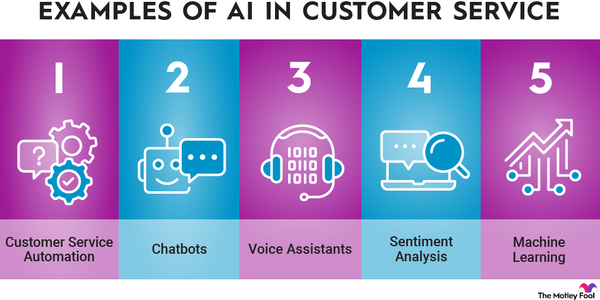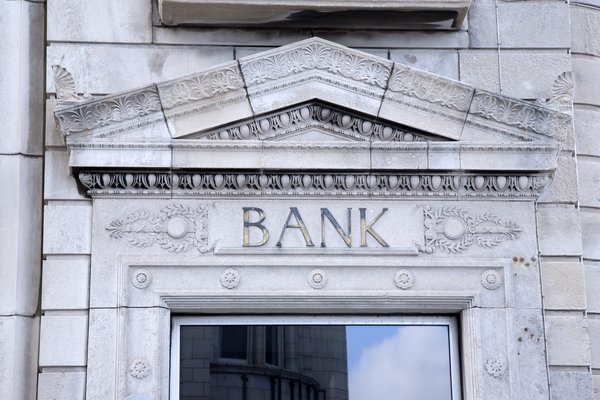Plaid provides a vital link between the traditional financial services industry and new financial technology (fintech) apps. When you open a new fintech app account, like Venmo, Acorns, Betterment, or Chime, you'll likely use Plaid's technology to link your bank account to the app. In 2023, 1 in 3 consumers with a bank account relied on Plaid to link that account to a new fintech app.
Fintech
Visa (V -0.23%) validated Plaid's technology in 2020 when the credit card giant agreed to buy the fintech start-up for more than $5 billion. However, anti-competitive concerns caused Visa to abandon the deal. Undaunted, Plaid has continued growing on its own.

Plaid's growing importance in the financial sector has many investors eagerly anticipating its initial public offering (IPO). Here's everything you need to know about the company and alternative options to consider in the fintech sector while you await Plaid's IPO.
IPO
Is Plaid publicly traded?
Is Plaid publicly traded?
Plaid is not a publicly traded company. The private company was founded by Zach Perret and William Hockey in 2013.
Since its founding, it has raised money from several venture capital funds, including Goldman Sachs (GS 1.79%) Investment Partners and Andreessen Horowitz. Credit card giants Visa and Mastercard (MA 0.07%) have also invested in the company.
When will Plaid IPO?
When will Plaid IPO?
Plaid didn't have an IPO on the calendar as of early 2024. However, given that regulators blocked Visa's $5.3 billion acquisition of Plaid in 2021, an IPO seems to be in the company's future.
In an interview with Fortune in late 2023, Plaid's co-founder and CEO Zach Perret stated, "We certainly would consider going public." However, he also said, "We haven't attached a timeframe to that." The company did take a notable step toward an eventual IPO in late 2023 by hiring its first CFO.
Plaid will likely wait until the IPO market improves before it goes public. IPOs have been in a deep freeze over the past few years. While the market seemed to thaw in late 2023 after several companies went public, their poor post-IPO performance is likely giving Plaid and other potential IPO stocks a reason to pause.
How to buy
How to buy Plaid stock
Most investors can't buy shares of Plaid because it hasn't completed an IPO. However, some secondary platforms, like EquityZen and Forge Global (FRGE 0.52%), enable accredited investors (i.e., high-net-worth individuals or those with a high income) to buy shares of pre-IPO companies like Plaid.
Interested accredited investors should check out those platforms to see whether they have pre-IPO shares available to buy. Non-accredited investors will need to wait for Plaid's IPO to buy shares. In the meantime, they can consider investing in an alternative to Plaid. Here are three alternative fintech stocks to consider:
Visa
Visa tried to buy Plaid for $5.3 billion in 2020. It was very excited about the prospect of acquiring Plaid because it would enhance its growth by improving its fintech capabilities. However, the U.S. Justice Department blocked that deal on anti-competitive concerns.
Monopoly
While Visa viewed Plaid's capabilities as complementary and not competitive, the regulatory opposition suggests Visa is making great strides in expanding its fintech capabilities. The company believes it can continue growing briskly as it focuses on accelerating its business through its three growth drivers: consumer payments, new flows, and value-added services.
Mastercard
Mastercard is a leading technology company in the global payments sector. The company has issued 3.3 billion Mastercard and Maestro-branded cards. Despite already being a leading card company, it's growing briskly.
It delivered double-digit net revenue and adjusted earnings-per-share growth in 2023, driven by healthy consumer spending and strong cross-border volume growth. The company expects those trends to persist in 2024, which should enable it to continue growing at a healthy clip.
PayPal
PayPal (PYPL 2.9%) is one of the many companies that benefit from Plaid's technology. It lets consumers easily link their bank accounts to apps like PayPal's Venmo. Plaid can enhance the growth of a client like PayPal by making it easier for new customers to open an account and start sending money.
Meanwhile, PayPal continues to invest in innovations to drive its growth. It started 2024 by launching six innovations aimed at revolutionizing commerce, including speeding up the customer checkout process. Investors interested in one of these alternatives to Plaid can buy shares in any brokerage account. Here's a step-by-step guide on how to invest in stocks like Plaid.
Step 1: Open a brokerage account
You'll have to open and fund a brokerage account before buying shares of any company. If you still need to open one, here are some of the best-rated brokers and trading platforms. Take your time to research the brokers to find the best one for you.
Step 2: Figure out your budget
Before making your first trade, you'll need to determine a budget for how much money you want to invest. You'll then want to decide how to allocate that money. The Motley Fool's investing philosophy recommends building a diversified portfolio of 25 or more stocks you plan to hold for at least five years.
You don't have to get there on the first day. For example, if you have $1,000 available to start investing, you might want to begin by allocating that money equally across at least 10 stocks and then increase your holdings from there.
Step 3: Do your research
It's essential to thoroughly research a company before buying its shares. You should learn about how it makes money, its competitors, its balance sheet, and other factors to make sure you have a solid grasp on whether the company can grow value for its shareholders over the long term.
Shareholder Value
Step 4: Place an order
Once you've opened and funded a brokerage account, set your investing budget, and researched the stock, it's time to buy shares. The process is relatively straightforward. Go to your brokerage account's order page and fill out all the relevant information, including:
- The number of shares you want to buy or the amount you want to invest to purchase fractional shares.
- The stock ticker (V for Visa, PYPL for PayPal, or MA for Mastercard).
- Whether you want to place a limit order or a market order. The Motley Fool recommends using a market order since it guarantees you buy shares immediately at market price.
Once you complete the order page, click to submit your trade and become a shareholder of one of these Plaid alternatives while you await its IPO. Investors would follow a similar blueprint to buy an IPO stock like Plaid when it goes public. Once shares become available, select Plaid's chosen stock ticker to buy shares through your brokerage account.
Profitability
Is Plaid profitable?
Plaid does not publicly report its financial results since it's a private company, so there isn't much publicly available information about its profitability. However, like many other fintech start-ups, Plaid likely isn't yet profitable.
The company cut about 20% of its staff in 2022 to reduce costs. In an article by TechCrunch, CEO Zach Perret wrote the following about the cost reductions to his team:
The simple reality is that due to these macroeconomic changes, our pace of cost growth outstripped our pace of revenue growth. I made the decision to hire and invest ahead of revenue growth, and the current economic slowdown has meant that this revenue growth did not materialize as quickly as expected.Plaid CEO Zach Perret
That seems to suggest the company was losing money at the time. Given the unknown state of Plaid's profitability, investors should take a close look at its financial statements ahead of any potential IPO. Ideally, they will at least show that the company is on the road to profitability.
Should I invest?
Should I invest in Plaid?
Unless you're an accredited investor, you can't invest in Plaid until it completes its IPO, which could be a while. That gives you plenty of time to follow and research the company to determine whether it's a good fit for your portfolio.
While a lot could change between now and Plaid's eventual IPO, the company has a lot going for it. In 2023, 1 in 3 U.S. consumers with a bank account used Plaid to help them sign up for fintech apps like Venmo. Though most consumers probably don't realize they're using Plaid, banks and fintech companies increasingly rely on Plaid to help them link accounts.
As Plaid and its partners continue growing, its revenue and value should rise. That could make it a compelling investment opportunity should it ever go public.
ETF options
ETFs with exposure to Plaid
Since Plaid isn't a publicly traded company yet, you can't get passive exposure to its stock through an exchange-traded fund (ETF). However, you can still use ETFs to invest in trends like fintech stocks.
Exchange-Traded Fund (ETF)
Here are a couple of notable fintech ETFs to consider:
- Ark Fintech Innovation ETF (ARKF 1.97%): Cathie Wood manages this ETF focused on innovative companies in the fintech sector. It typically holds between 35 and 55 stocks and has a 0.75% ETF expense ratio. Notable holdings as of early 2024 were Block (SQ 2.32%), Shopify (SHOP 1.11%), and SoFi Technologies (SOFI 3.69%).
- Global X FinTech ETF (NYSEMKT:FINX): This ETF focuses on companies in the emerging financial technology sector. It held shares of 60 companies in early 2024, including Block and PayPal, which are in the top 10. The ETF had a 0.68% total expense ratio.
Related investing topics
The bottom line on Plaid
Plaid provides a vital link between traditional financial institutions and fintech apps. Plaid's usage (and revenue) will grow as more consumers use fintech apps, which should benefit its investors over the long term. While most people can't invest in its stock yet, the company is open to going public when the time is right. That makes it an interesting pre-IPO stock to watch.
FAQ
Investing in Plaid FAQ
How do I invest in Plaid?
You can't invest in Plaid unless you are an accredited investor because it hasn't yet completed an IPO. However, high-net-worth individuals and those with a high income can check out secondary platforms like EquityZen and Forge Global. They occasionally have pre-IPO shares of companies like Plaid available to buy on their platforms.
Is Plaid on the stock market?
Plaid is not on the stock market. It's not a publicly traded company yet because it hasn't completed an IPO.
Is public investing in Plaid?
No, the public can't invest in Plaid yet. It's a private company that hasn't completed an IPO yet.
What is the valuation of Plaid IPO?
Plaid hasn't set a valuation for its IPO yet. The company last raised money from investors in 2021. It brought in a total of $425 million, giving it a post-money valuation of $13.4 billion, more than double what Visa had agreed to acquire the company for in 2020.
However, startup values plunged since that time due to market volatility and higher interest rates, so Plaid's current valuation could be a lot less.
































































































































































































































